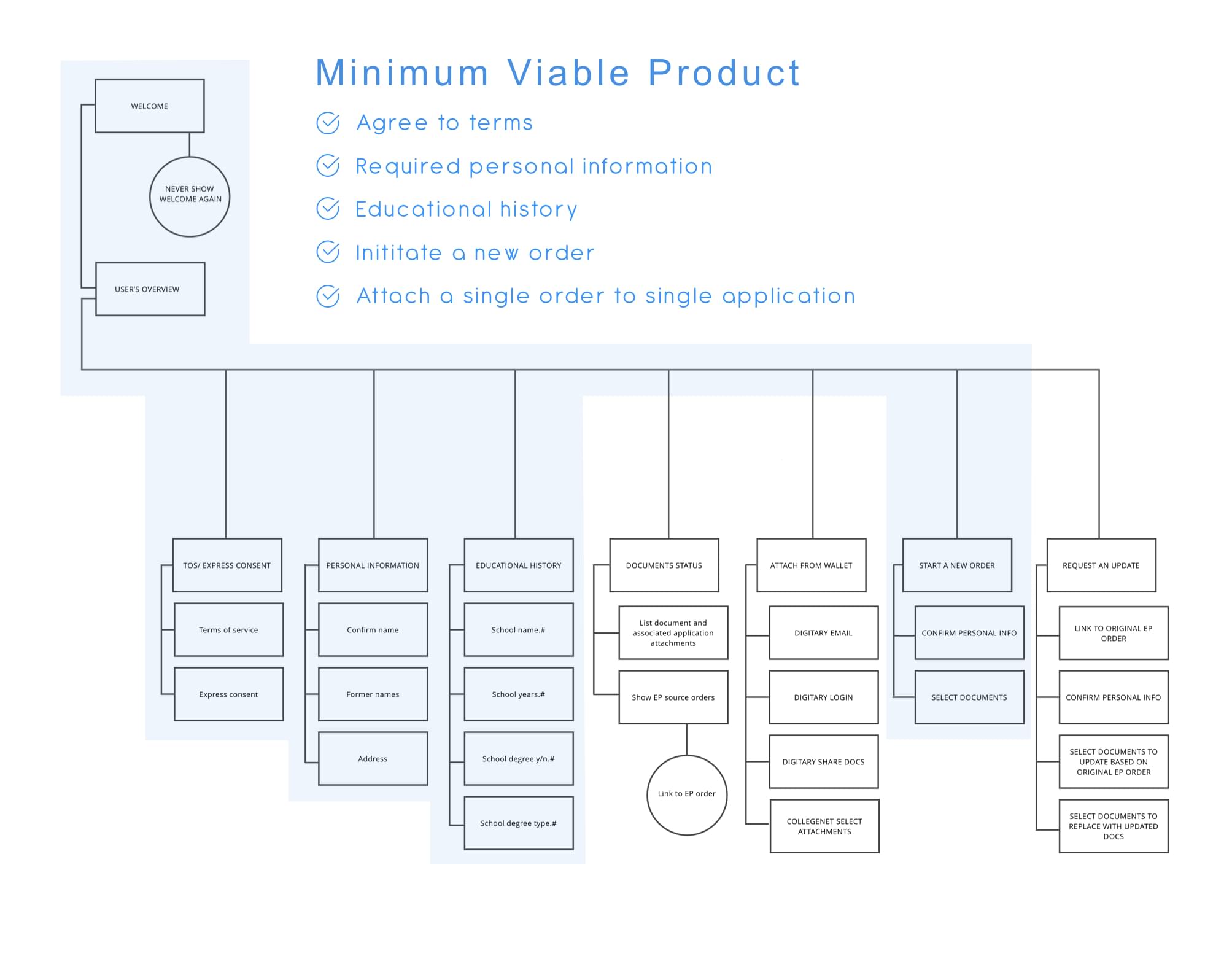Information Architecture Volleys
Once the product requirements were taking shape, I had a clearer understanding of what the applicant workflow should provide. I started roughing out flowcharts of different paths the users could take to get from point A to point B. I drew and re-drew these, each time consulting with the product team to analyze strengths, weaknesses and opportunities. We went back and forth for a few weeks, expanding and simplifying as we went. After some time, common paths of least resistance took shape. I took the flowchart to the product owner for a final examination and he agreed we could use it to move on to the next step.


